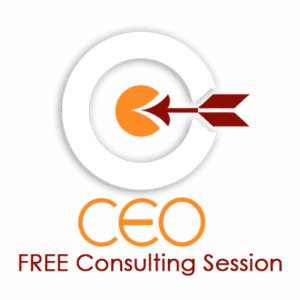Summary: What do you answer when someone starts a conversation with “How are you? “Most of us say the typical knee-jerk “Fine, Thanks.” Also, do you enter a debate with boxing gloves on, ready to win rather than lose? Neither way works in the long term. Here’s what makes a difference.
Dear Dr. Sylvia,
I will keep this short.
I am appalled by the superficiality on social media regarding what is right and wrong, good and bad, healthy and unhealthy.
Somehow, we stay at the obvious and never get to “Aha.”
However, when we take the time to get to “Aha,” there is an opportunity for positive change.
I hope you can provide me with a compass to help me find a better way to communicate with my team at work.
In our coaching sessions, I appreciate how you ask such thoughtful questions; it makes me stop and, yes, think!
I need more.
Signed,
Explorer
How to Communicate to Captivate
Dear Explorer,
We live in a world where conversation often feels like a tennis match: serve, return, smash, point. Debate ups the stakes, turning into a punch-and-jab boxing match for dominance.
My research into practical communication skills shows a significant difference when using the dialogue method.
Think of it this way: dialogue is jazz. It’s improvisation, listening deeply, creating something new together.
Over the past year, I attended a fascinating retreat that allowed me to delve deeply once again into the dialogue method. Here, I will share what happened with a group of highly skilled leadership educators.
Firstly, here are the basics.
Then, at the end of this blog, I will tell you what happened at the two-day meeting. It started with pleasantries, had a middle period of tension and conflict, and eventually ended with some tiny sprouts of new ways of talking with each other.
Meet the Key Teachers of the Dialogue Method.
Over the past century, a handful of thinkers have shaped our understanding of dialogue as a practice that can transform work, families, and even entire communities.
Here are the prominent voices who built the dialogue model, and why their methods are urgently needed today.
Martin Buber: The Sacred “I–Thou”
The philosopher Martin Buber set the stage with his classic idea: we can treat others as “It” (objects to be used) or as “Thou” (beings to be encountered).
Dialogue, for Buber, was about meeting another person as a whole human being, without an agenda or manipulation.
Why now? In the age of social media, where people are often reduced to avatars or data points, Buber’s reminder that relationships are sacred is revolutionary.
David Bohm: Dialogue as Collective Intelligence
Physicist David Bohm brought his brilliance to communication, saying dialogue is not about winning an argument but about suspending assumptions and thinking together.
His dialogue circles weren’t therapy sessions or debates; they were about tapping into group wisdom that goes deeper than any single individual.
Why now? Because organizations are drowning in complexity. Leaders who learn Bohm’s methods can turn endless, fragmented meetings into spaces of clarity and innovation.
Paulo Freire: Dialogue for Liberation
Brazilian educator Paulo Freire saw dialogue as the key to education and social change. In Pedagogy of the Oppressed, he insisted that dialogue is the antidote to domination, it allows people to find their voice and reclaim their agency.
Why now? Because polarization and inequality are everywhere. Dialogue, in Freire’s sense, is the tool that empowers, not just informs.
William Isaacs: Dialogue in Organizations
At MIT, William Isaacs brought Bohm’s theories into business practice.
His book Dialogue and the Art of Thinking Together showed how dialogue can break through defensive routines in organizations, replacing “Who’s right?” with “What’s possible?”
Why now? Because corporate life is under stress. Layoffs, hybrid tensions, and relentless pressure leave people guarded. Isaacs’s work helps leaders open space for truth-telling without fear.
Mikhail Bakhtin: The Polyphony of Voices
Literary critic Mikhail Bakhtin argued that truth emerges from multiple voices, not a single authority.
His idea of “polyphony” (many voices) reminds us that dialogue isn’t about consensus—it’s about holding differences in creative tension.
Why now? Because democracy itself is at risk. If we cannot accommodate many voices without silencing or canceling them, we lose the messy, essential practice of freedom.
Why Dialogue is the Leadership Superpower of the 21st Century
At work: Dialogue builds psychological safety, unleashes creativity, and prevents burnout from endless conflict.
At home: Dialogue stops families from repeating old generational patterns (you know I had to bring that in).
In community: Dialogue is the bridge over polarization; without it, we’re stuck shouting across divides.
Debate Sharpens Arguments, But Dialogue Transforms People
We don’t just need more clever comebacks; we need leaders, parents, educators, and citizens who can practice dialogue as a discipline.
Suppose Buber gave us the soul of dialogue, Bohm the structure, Freire the justice lens, Isaacs the organizational toolkit, and Bakhtin the reminder of multiplicity.
Finally, the challenge is ours: to utilize what they have given us.
My Dialogue Meeting Turned into a Debate and Then Did a Course Correction
I was with a group of thirty senior leaders for two days. The facilitator began discussing the dialogue method. I was looking forward to a fabulous time discussing leadership education.
Instead, it turned into a win-or-lose setting with several individuals getting so riled that they left.
Spoiler alert: They did return later.
Initially, they claimed they were not being “heard” and that there was an underbelly agenda.
This became a theme of the retreat. We needed to get a handle on what the “underbelly” meant.
Early on the second day, clarity began to shine through the clouds.
The underbelly showed itself.
Dialogue Includes Personal Growth Training and Systems Thinking
Those who left and eventually returned were accustomed to the dictatorial model of leadership, characterized by the phrase “Do as I say and don’t question.”
Once back in their seats with a sense of embarrassed humility, they learned to ask more questions and then ask even more questions.
Thus, there was a sprinkling of therapy, emotional intelligence training, and a better understanding of why the dialogue method takes longer and yields more effective long term results.
Consider the Basics of “Why are we even talking now?”
Consider that before your next meeting, dinner conversation, or online argument, ask yourself:
Am I here to win, or to learn?
Am I seeing the other as “Thou” or as “It”?
Can I suspend certainty long enough to let something new emerge?
The future doesn’t belong to the loudest voice. It belongs to the leaders who can hold the deepest dialogue.
To your success,
Sylvia Lafair
PS. Please email me at sylvia@ceoptions.com to request a complimentary copy of my webinar, “Communicate to Captivate,” which provides positive strategies for engaging in dialogue with your team, family, or community.


